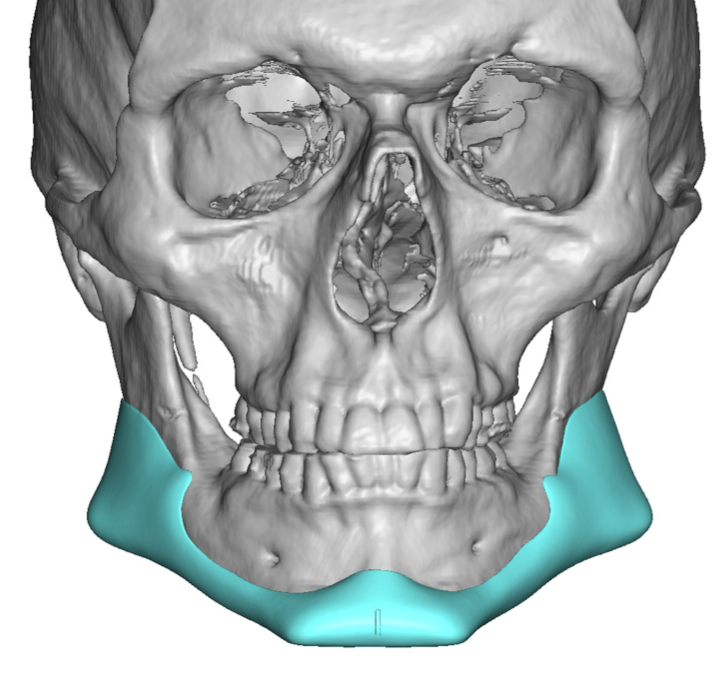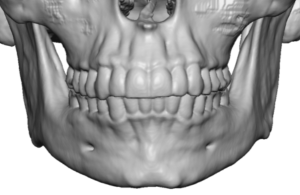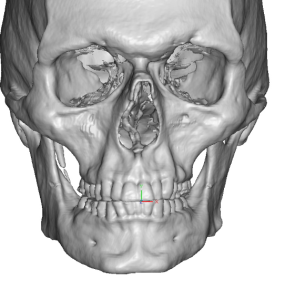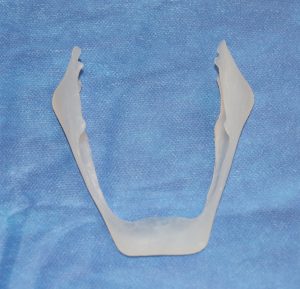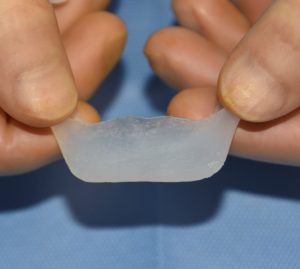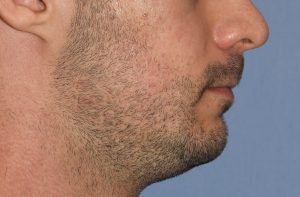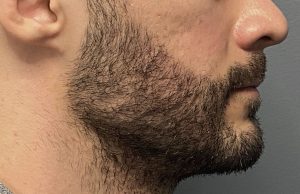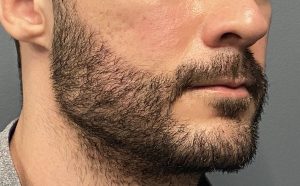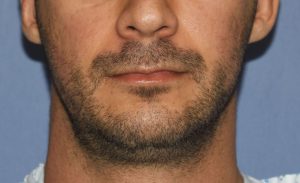Background: When designing a custom jawline implant there are five areas to consider for dimensional management. These include the chin, jaw angles (2) and the body area between the chin and the jaw angles. (2) While all are important in creating the overall jaw augmentation effect, the chin area often garners the most attention given its prominent anterior projection. It may also attract a disproportionate amount of design attention if there is a prior history of chin augmentation surgery particularly if an indwelling standard chin implant is present.
Beyond the more common dimensional issues of the chin to consider in the implant design of horizontal projection and vertical length is its width. Chin width is highly influenced by chin shape of which there are two basic types, round and square. While there are variations between the two general shapes in men the square chin shape usually is preferred. There are two key elements in designing a square chin shape, both of which are violated by the current standard square chin implant styles. In these standard implants their design flaws is that width helps make for a square chin shape…it does not. How square the chin shape is (the corners) is what makes its square regardless of its width. The more square the chin corners are the more square the chin will look on the outside. The width of the square chin is largely controlled by how width the jawline is. And not matter how square the chin shape is it shield usually not violate the taper of the jawline as it comes forward. If it does the squareness of the chin can look out of place.
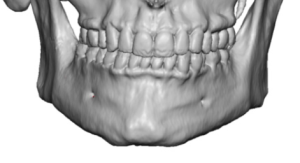
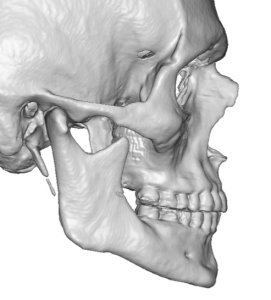
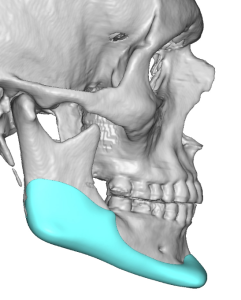
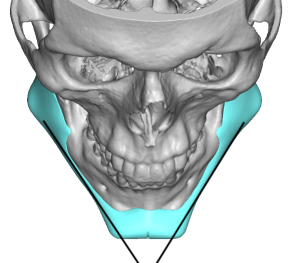


Square chins, whether done as part of a custom jawline implant or just a custom chin implant alone, come from square chin corners that stay, as much as possible, within the line of the jawline as the two sides converge anteriorly. This is supported by observing the lateral bony tubercles of the chin in the naturally more square chin.
Case Highlights:
1) The chin part of a male custom jawline implant often had a more square and less round shape.
2) Square chin implant shapes will likely be seen if they have exaggerated designs.
3) The width of a square chin shape takes clues from the presence of bony tubercles as well as the line of width of the jawline behind it.
Dr. Barry Eppley
World-Renowned Plastic Surgeon

